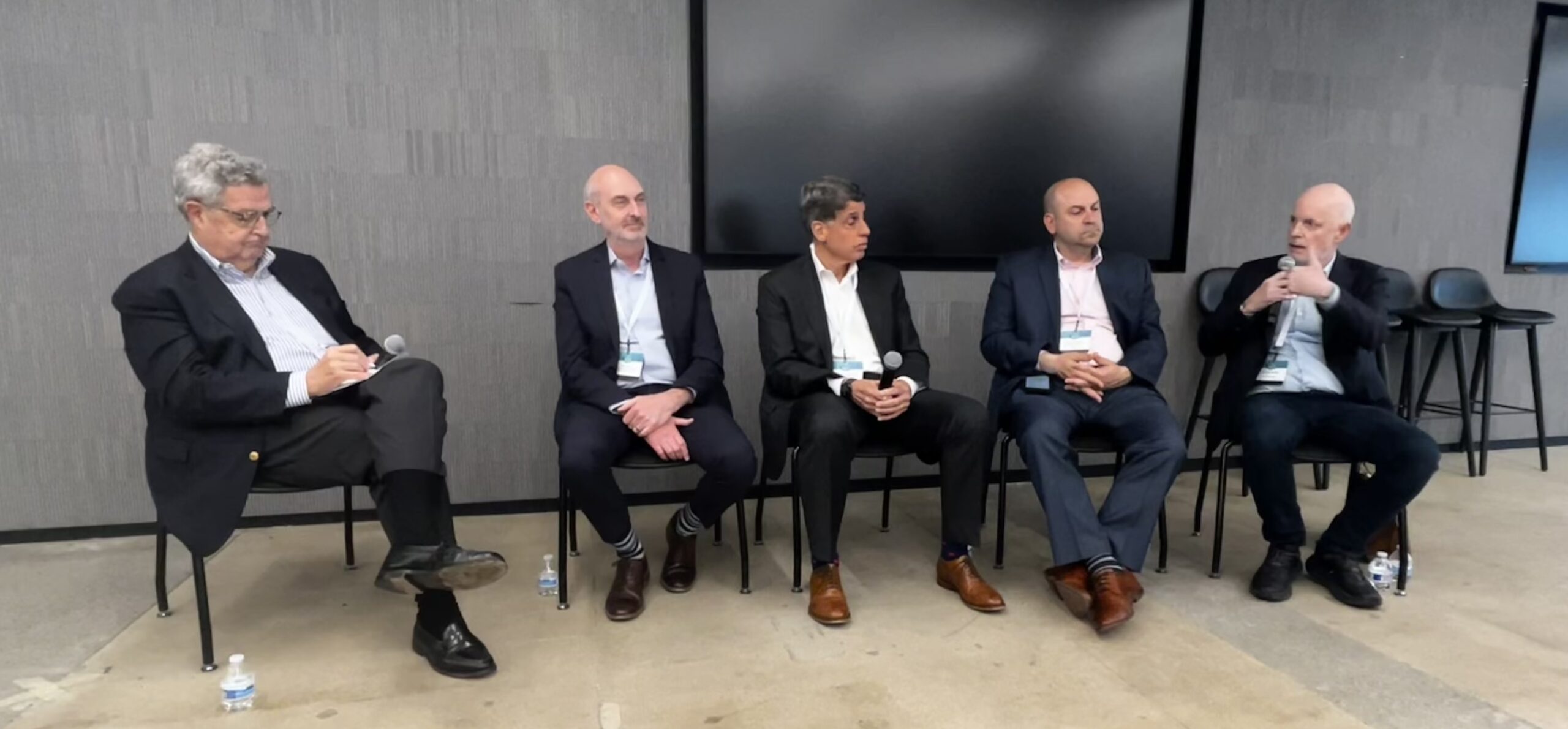
In case you missed it, last month’s Buildings Conference Venture Forum session featured a panel discussion with principals from AEC Angels, an early-stage “investing club,” as Managing Director Grant McCullagh likes to put it.
AEC Angels, founded in 2020, consists of leading AEC member companies Thornton Tomasetti, STO Building Group, Syska Hennessy Group and SHoP Architects. AEC Angels has made 16 investments to date including companies such as OpenSpace, Assembly OSM, Rhumbix and TestFit.
These companies represent some of the most forward-thinking built world corporations and, through investment, are aiming to move the needle on innovation for the entire industry.
During the recent session, panelists discussed strategies for balancing innovation and investment, furthering industry-wide tech adoption and what technologies they are most excited about.
Participants included Tom Scarangello (Thornton Tomasetti Senior Advisor), Robert Ioanna (Syska Hennessy Group Executive Principal), Robert Leon (STO Building Group Chief Innovation Officer), William Sharples (SHoP Architects Founding Principal) and moderator Grant McCullagh (Former AECOM Vice Chairman, MD TTWiiN Technologies and BuiltWorlds Director).
We’ve boiled down the discussion into three guiding principles.
The Big Takeaways:
- Top-down leadership remains critical to success in the AEC industry - Effective innovation happens when it comes from an engaged C-suite that is in touch with business unit level needs. When the C-suite is engaged at the business unit level, companies are able to implement more effective innovation strategies resulting in stickier relationships with the technology. Leon, as Chief Innovation Officer, was able to provide firsthand accounts of how he engages throughout STO Building Group to ensure a constantly evolving corporation. Furthermore, Sharples' SHoP Architects is a great example of a corporation dedicated to actively piloting new technologies.
- It’s better to be prepared than scared - The rate of change facing corporations has accelerated over the last several years due to developments in AI. As a result, AEC companies face a junction similar to when BIM initially gained traction: Companies that choose not to adopt the technology will be left behind others that are able to effectively incorporate new technologies. The AEC Angels emphasized that it is important to stay educated on the capabilities of new technology, like AI, in order to create implementation strategies that fit individual business needs. With effective data strategies and an understanding of how to effectively leverage AI, AEC companies can mitigate the risks associated with adoption. Scarangello, an executive dedicated to understanding the impacts of AI on the AEC industry, issued a warning to other contractors that those who fail to establish an adoption strategy will be left behind during this period of rapid tech acceleration.
- By combining the different perspectives across the AEC value chain in its membership, AEC Angels has the unique ability to assess opportunities from the industry perspective - The member companies are able to provide portfolio companies with early partnerships, providing a substantial value-add for startups. Furthermore, AEC Angels looks to support portfolio companies beyond the initial investment by providing resources from the corporate members and industry connections. Although investment can lead to strategic partnerships with member companies, the varying company types comprising the AEC Angels (design/architecture, engineering, contracting and construction) allows the fund to focus on investing in tech for the betterment of the industry rather than purely strategic or financial motives.






Discussion
Be the first to leave a comment.
You must be a member of the BuiltWorlds community to join the discussion.